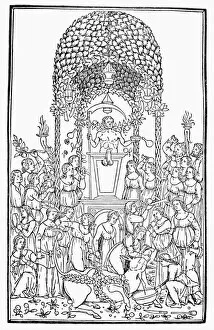Phallicism Collection
"Exploring the Ancient Fascination with Phallicism: A Journey through Art and Culture" Delve into the intriguing world of phallicism
All Professionally Made to Order for Quick Shipping
"Exploring the Ancient Fascination with Phallicism: A Journey through Art and Culture" Delve into the intriguing world of phallicism, an ancient fascination that transcends time and cultures. From priapic novels to satirical engravings, this captivating realm has left its mark on history. Step back to 1783 as we uncover the engraved title page of an English priapic novel, a testament to society's enduring curiosity about human sexuality. Moving across borders, an 18th-century French engraving mocks feminine sensuality in a playful invocation to Priapus himself. Venturing further into antiquity, discover a grotesque phallic bronze lamp from Pompeii. This caricature of Mercury serves as a reminder that even gods were not immune to the allure of phallic symbolism. The Roman theatre at Nimes reveals another facet with its outer wall adorned by a striking phallic bas relief - evidence of how deeply ingrained this imagery was in daily life. Traveling back millennia, we encounter clay phallic figures from various regions in Romania belonging to the Cucuteni culture. These intricate diagrams showcase their reverence for fertility and reproduction during the 4th millennium B. C. , shedding light on ancient beliefs surrounding creation and life itself. Marvel at Roman gemstones meticulously engraved with explicit phalluses - precious artifacts that offer glimpses into their society's rituals and desires. One such gemstone depicts a sacrificial scene, reminding us of the profound significance attributed to these symbols throughout history. Join us on this captivating journey through art and culture as we unravel the mysteries behind humanity's age-old fascination with all things phallic. Explore how these representations have evolved over time while remaining eternally intertwined with our understanding of desire, power, and creation itself.





